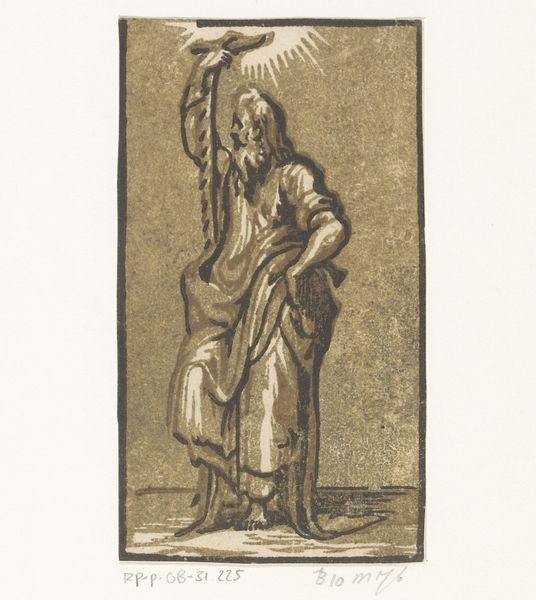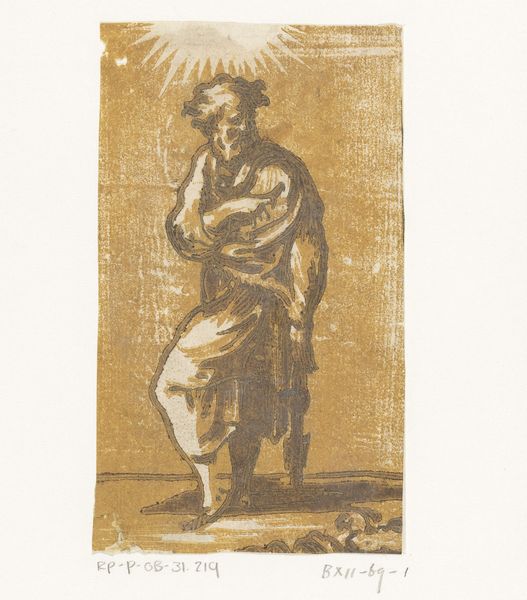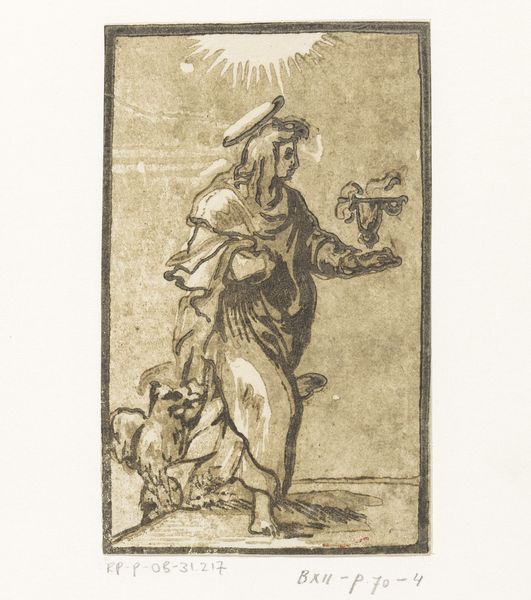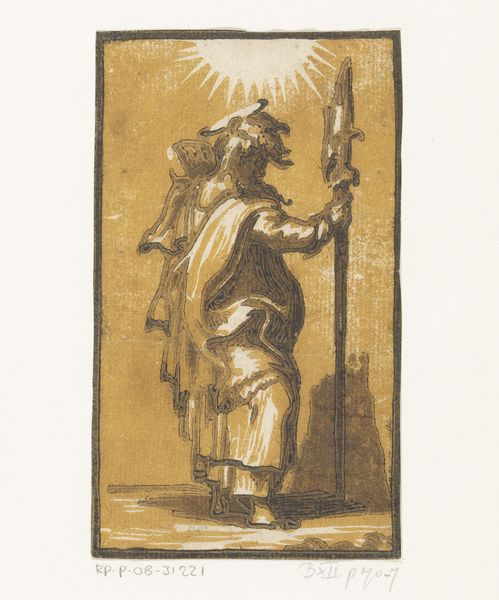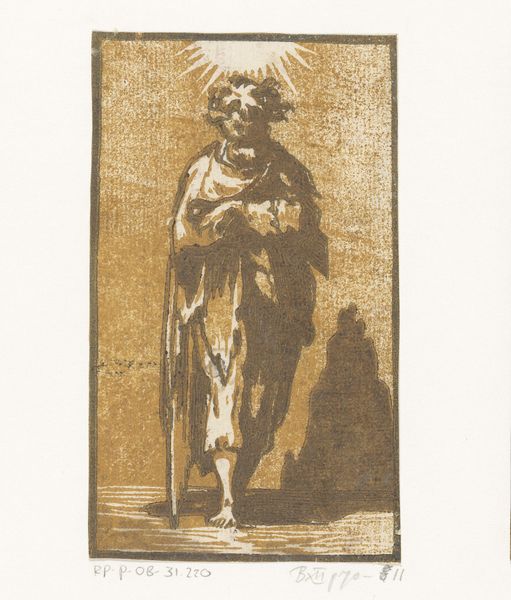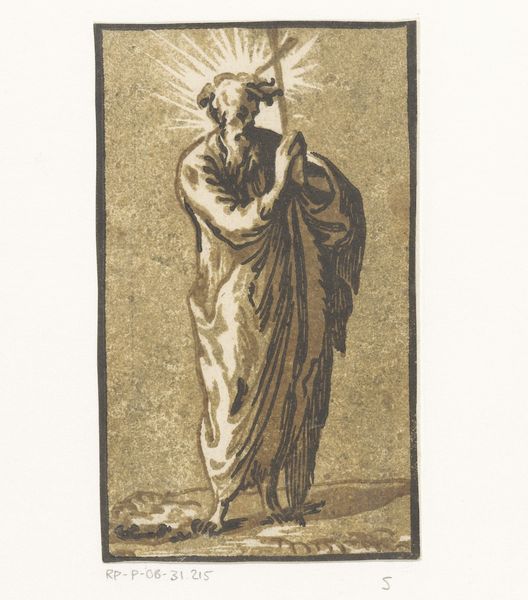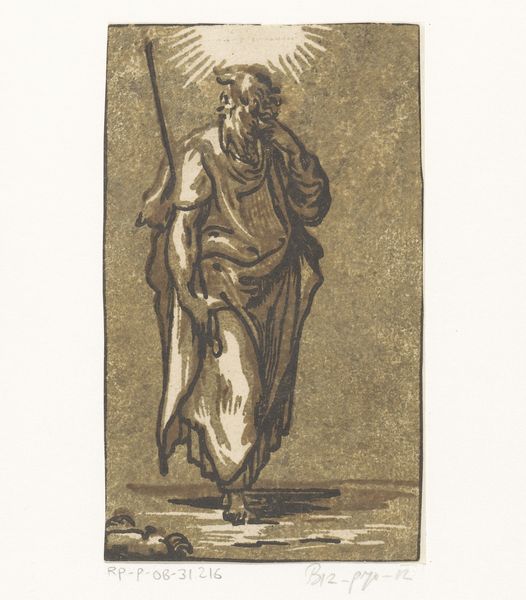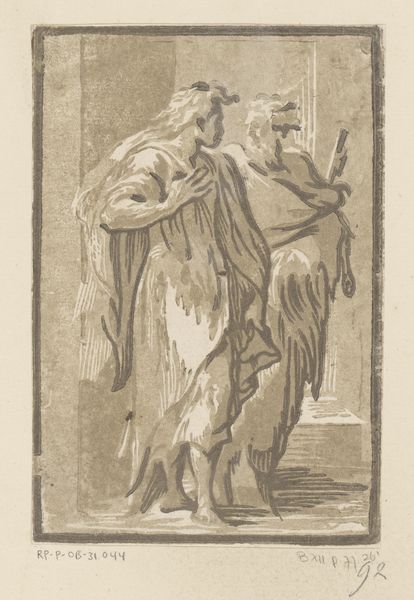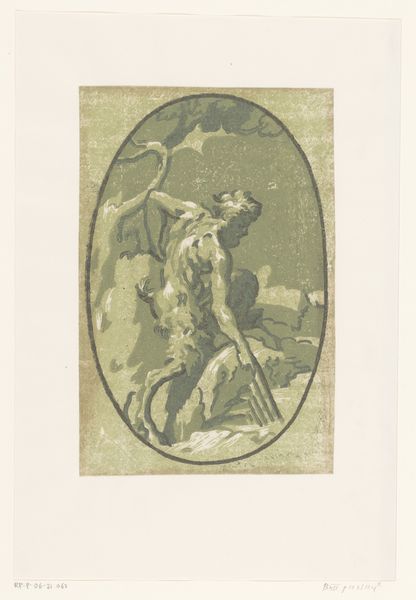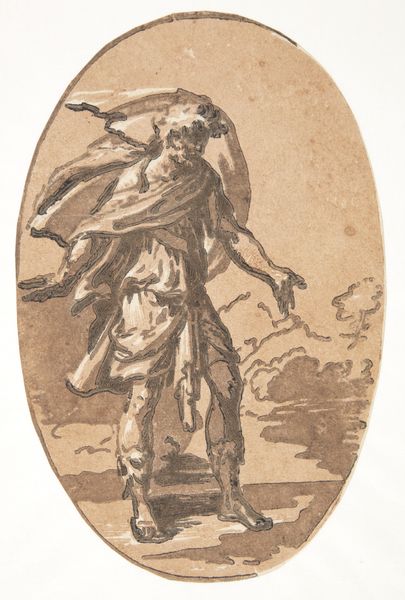
print, engraving
# print
#
old engraving style
#
figuration
#
italian-renaissance
#
engraving
Dimensions: height 119 mm, width 71 mm
Copyright: Rijks Museum: Open Domain
Antonio da Trento created this print of Saint Jude Thaddeus sometime between 1520 and 1550. The print presents us with an interesting problem of interpretation. Jude Thaddeus was one of the twelve apostles of Jesus, and a relatively obscure one at that, yet Trento has placed him as the subject of this work. Prints like this one served a purpose within the Catholic Church during the Italian Renaissance. It was a time of Counter-Reformation, with the Church Militant seeking to reinforce its authority against reformist critiques. Prints were cheap to produce and easy to distribute, making them ideal for disseminating images of saints and biblical scenes, reminding the faithful of the Church's teachings. The halo around Jude’s head serves to reinforce his holiness. Examining the historical context and the religious institutions of the time helps us understand the print’s original function and meaning. Art historians consult a variety of sources, from religious texts to economic records, to better understand these works.
Comments
No comments
Be the first to comment and join the conversation on the ultimate creative platform.

